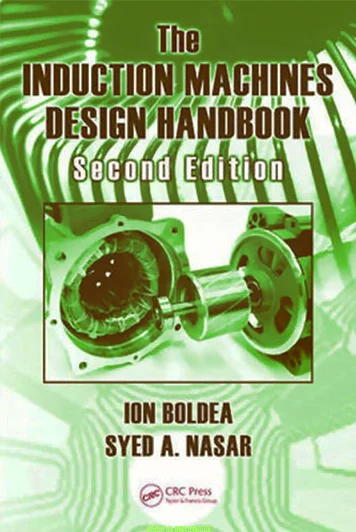The well-being of the environmentally conscious modern world is strongly dependent on the efficient production and use of electric power. Electric power is produced by synchronous generators, but in the flexible distributed power systems of the near future induction motors as variable speed generators/motors will increasingly take their place. Pumped storage power plants already use doubly fed induction motors of up to 300 MW/unit with power electronics converters on the rotor side.
Induction motors, on the other hand, have become an industrial mainstay due to their robustness, low cost, and good performance when fed from the standard A.C. grid. Developments in power electronics and digital controls have led to the wide spread use of induction motors invariable speed drives in most industries. It is no exaggeration to say that in the last decade, variable-speed induction motors have already become an industrial race horse.
While better efficiency and lower cost are the main challenges for constant speed applications, for variable speed drives, the new added performance indicators are speed of motion control response, robustness, and accuracy over ever wider speed and power ranges. More recently, the development of ultra-high-speed variable speed drives with maximum speeds of 60,000 rpm and outputs of tens of kW also poses extraordinary technical challenges.
In terms of research and development, new analysis tools such as finite element methods, design optimization methods, advanced nonlinear circuit models for transients, vector and direct torque control, and wide frequency spectrum operation with power electronics have been widely used in the past two decades in connection with induction machines.
About the Book
This book is a bold attempt to build on the classic books on induction machines by R. Richter, P. Alger, B. Heller, V.Hamata, C.Veinot, and P. Cochran. The 28 chapters cover a wide range of issues, including induction machine applications, principles and topology, materials, windings, electric circuit parameter calculations, equivalent circuits (standard and new), steady-state performance, starting and speed control methods, flux harmonics and parasitic torque, skin and saturation effects, fundamental and additional losses (spatial and temporal harmonics), thermal modeling and cooling, transients, specifications and design principles, designs below 100 kW, designs above 100 kW, variable speed designs, design optimization, very high frequency modeling and behavior of three-phase induction generators, linear induction motors, and IM, testing of three-phase induction machines and single-phase IM (basics, steady state, transients, generators, design, testing).
Numerical examples, design case studies, and transient behavior waveforms are presented throughout the chapters, making the book self-contained and user-friendly for young and experienced readers in academia and industry. The book aims to be both user-friendly and stimulating at the same time, as it covers both standard and new topics in induction machines. This point is made clear in the fairly detailed table of contents. We look forward to hearing from our readers.
STREBITO Electronics Precision Screwdriver Sets 142-Piece with 120 Bits Magnetic Repair Tool Kit


Highly interested